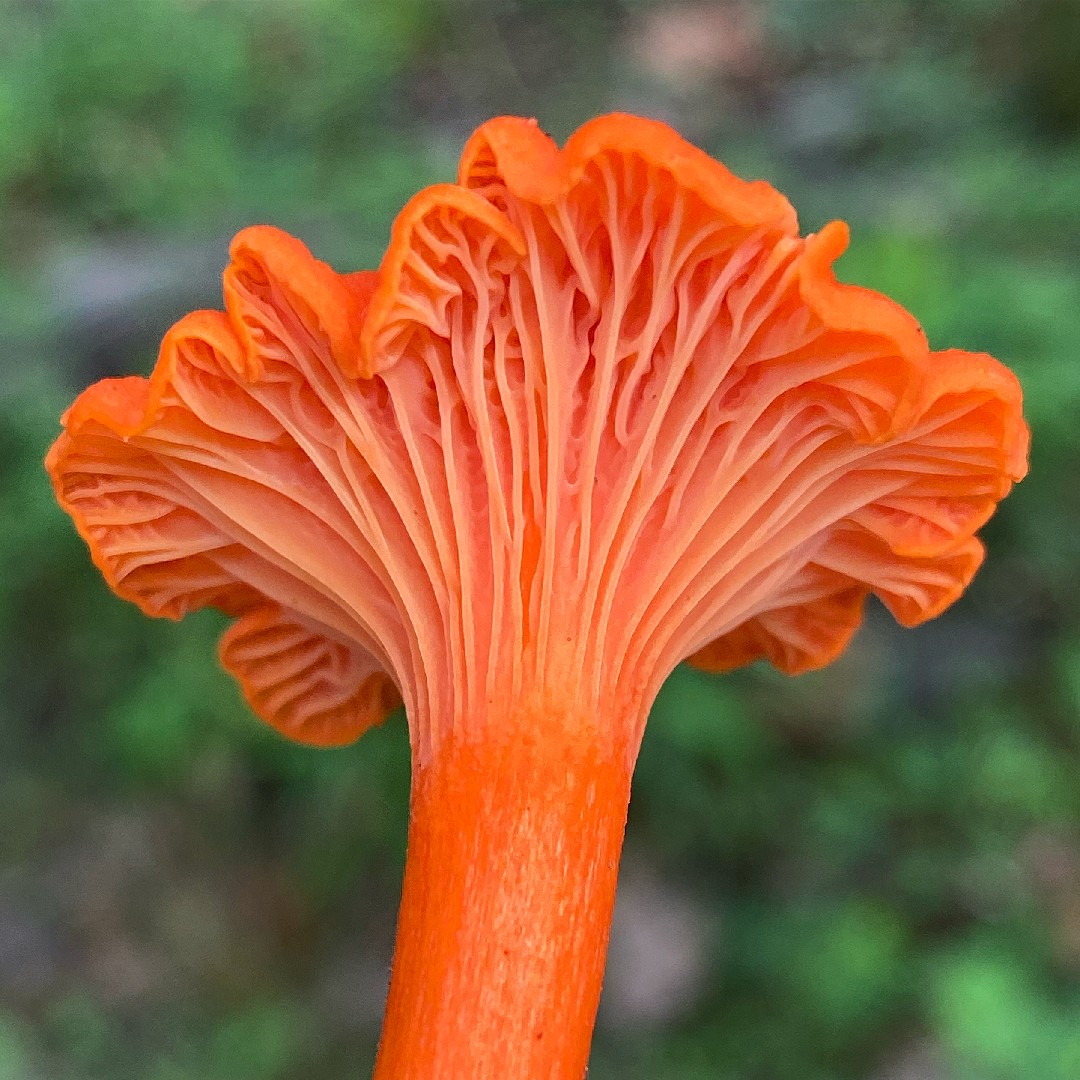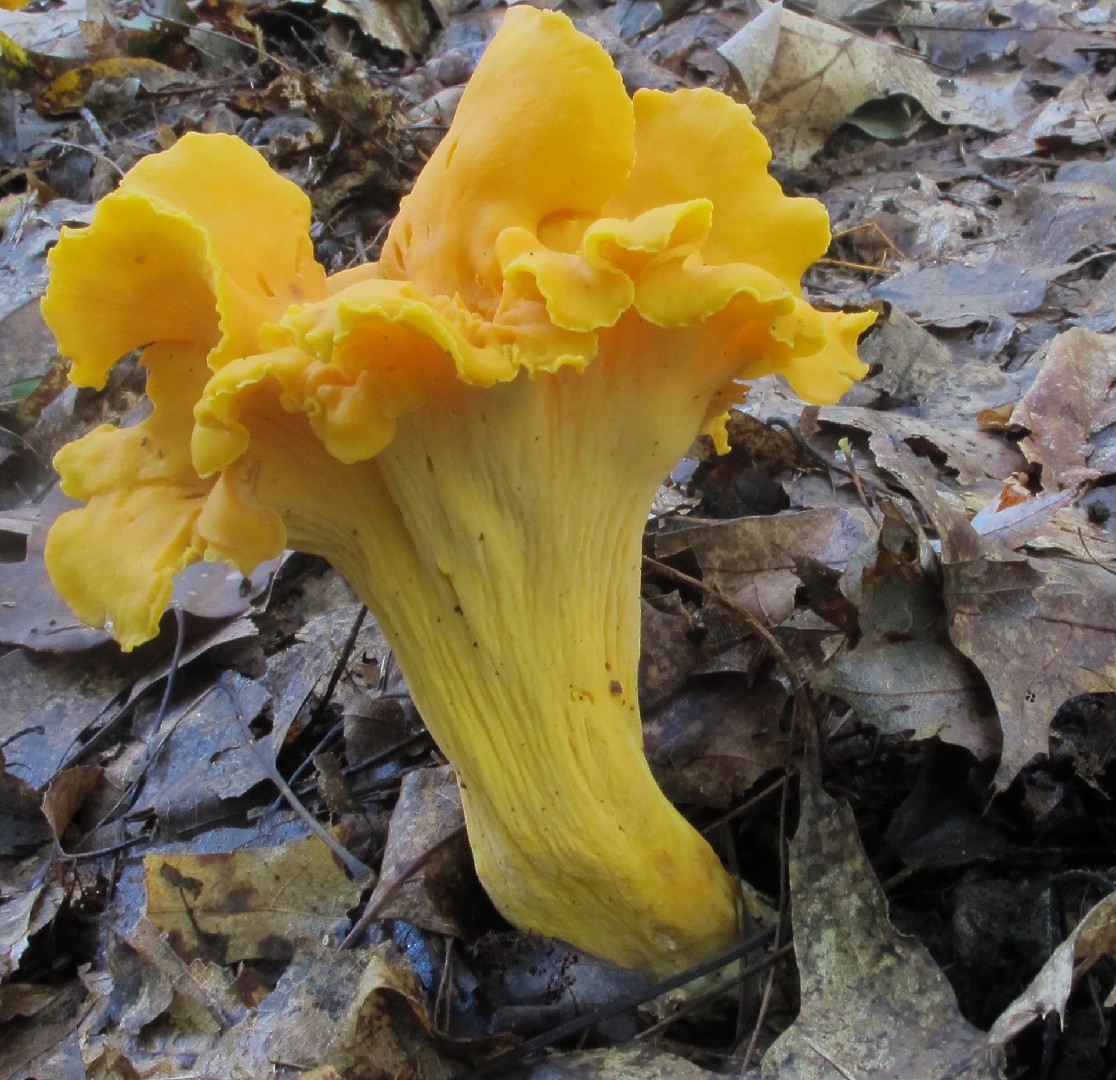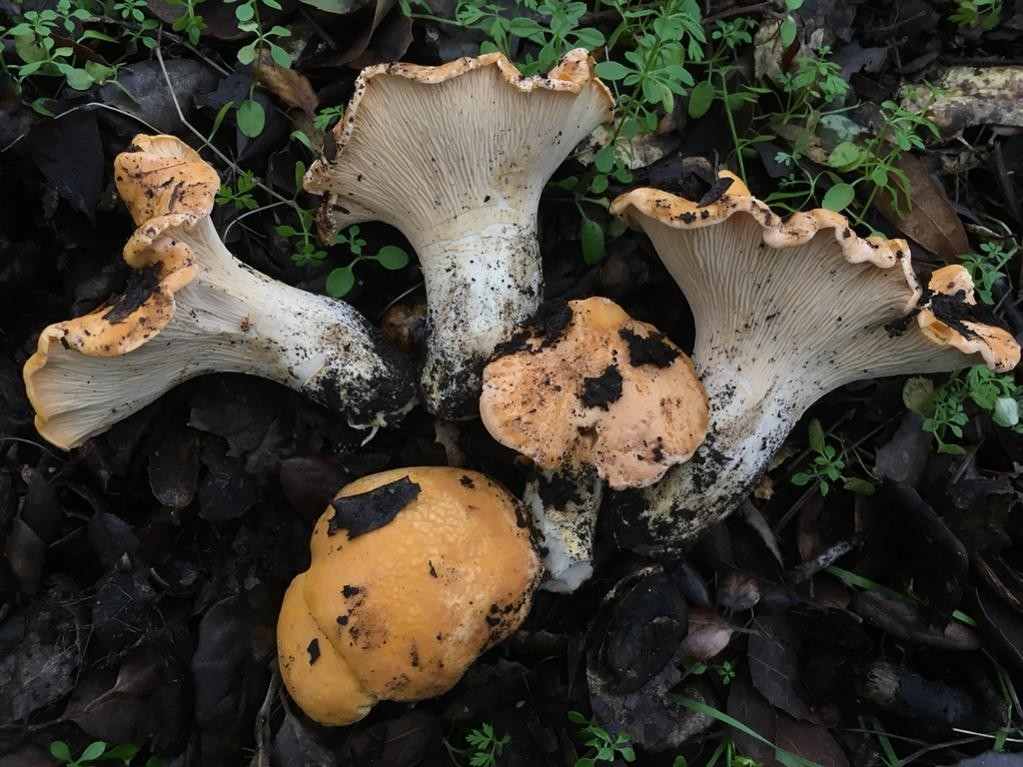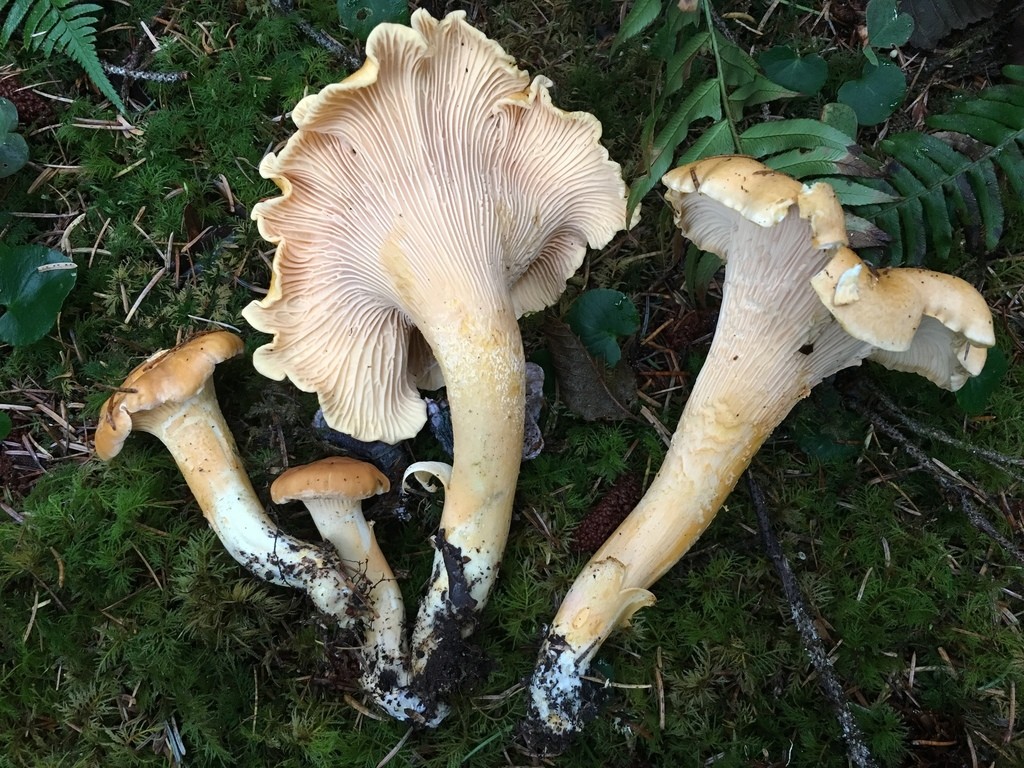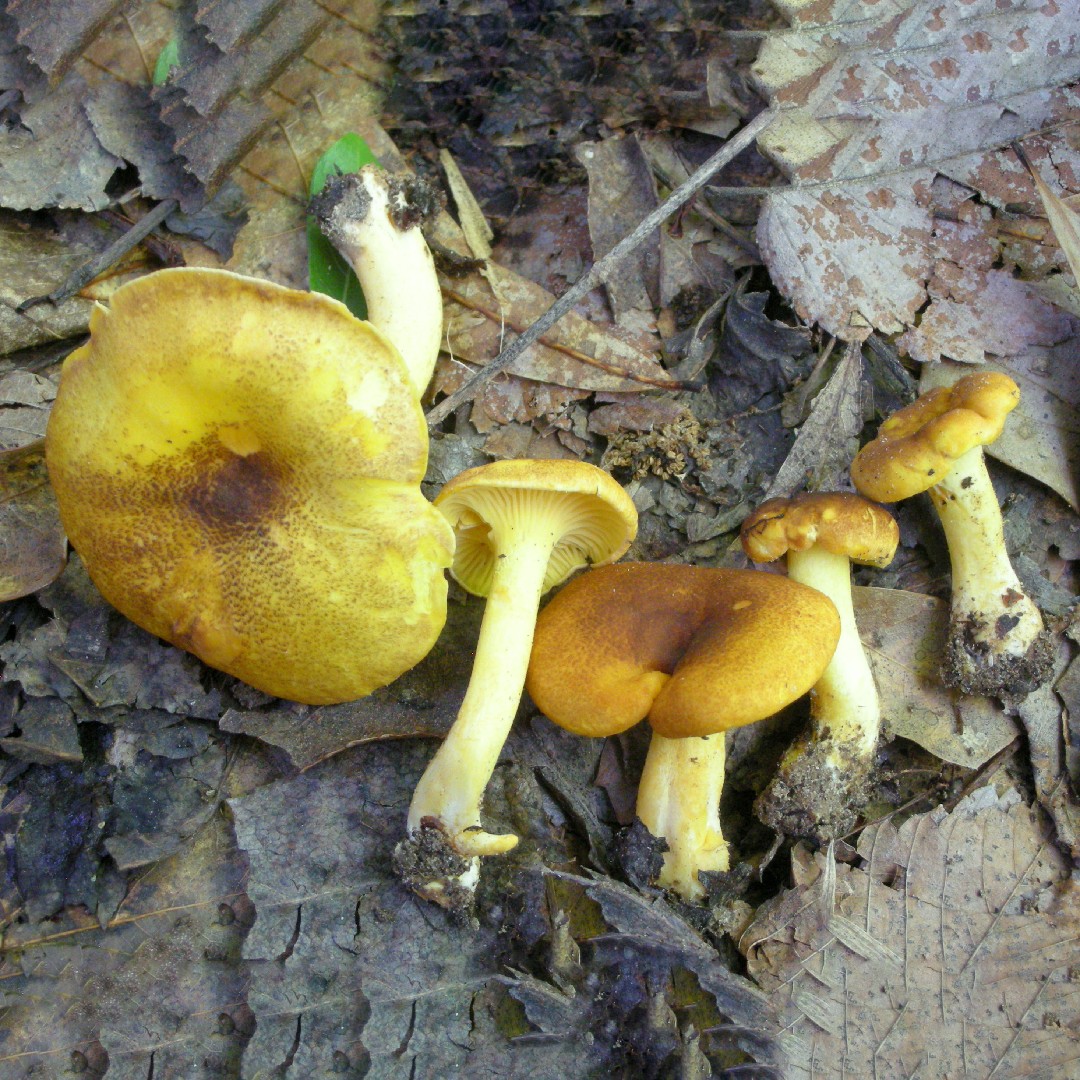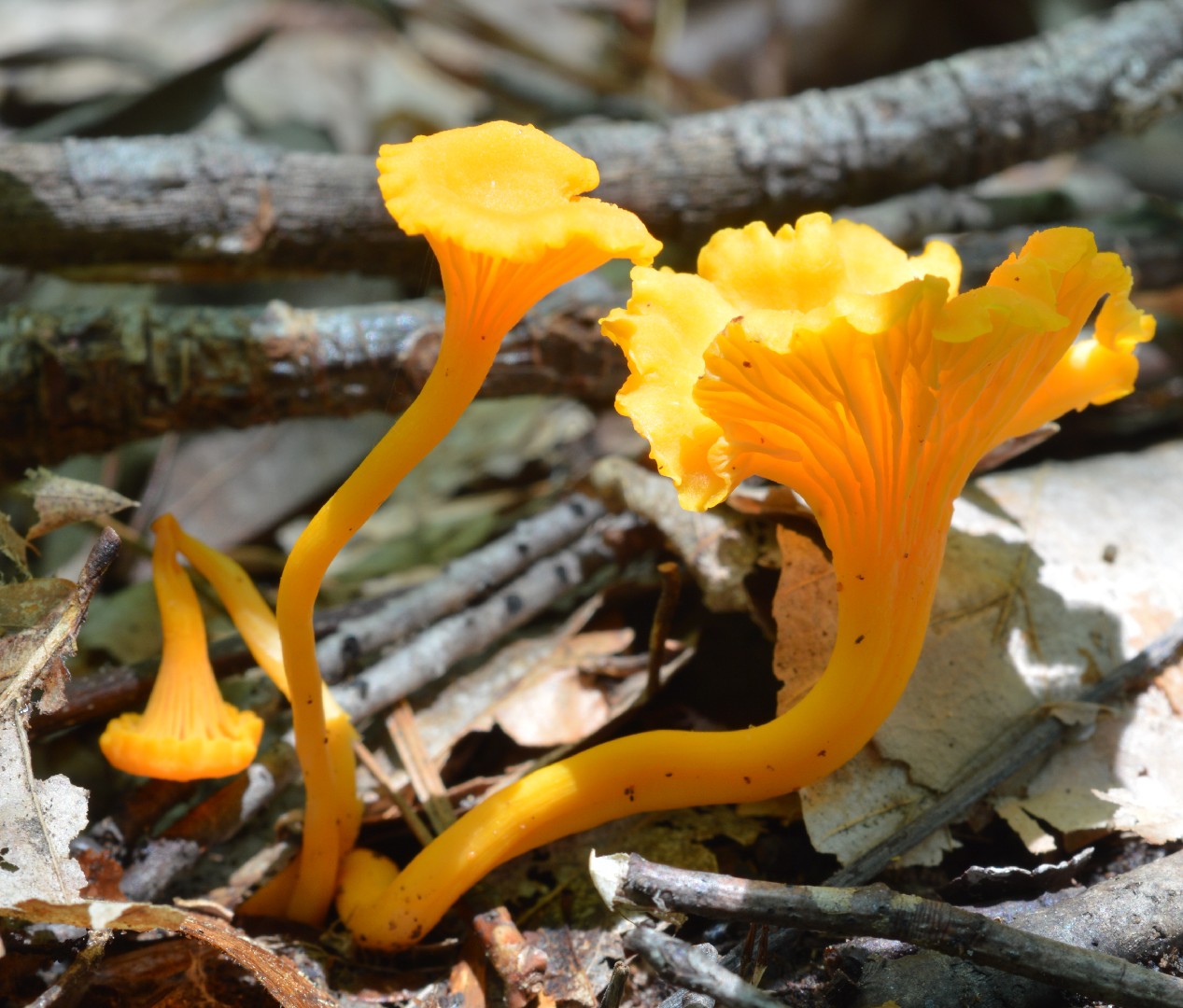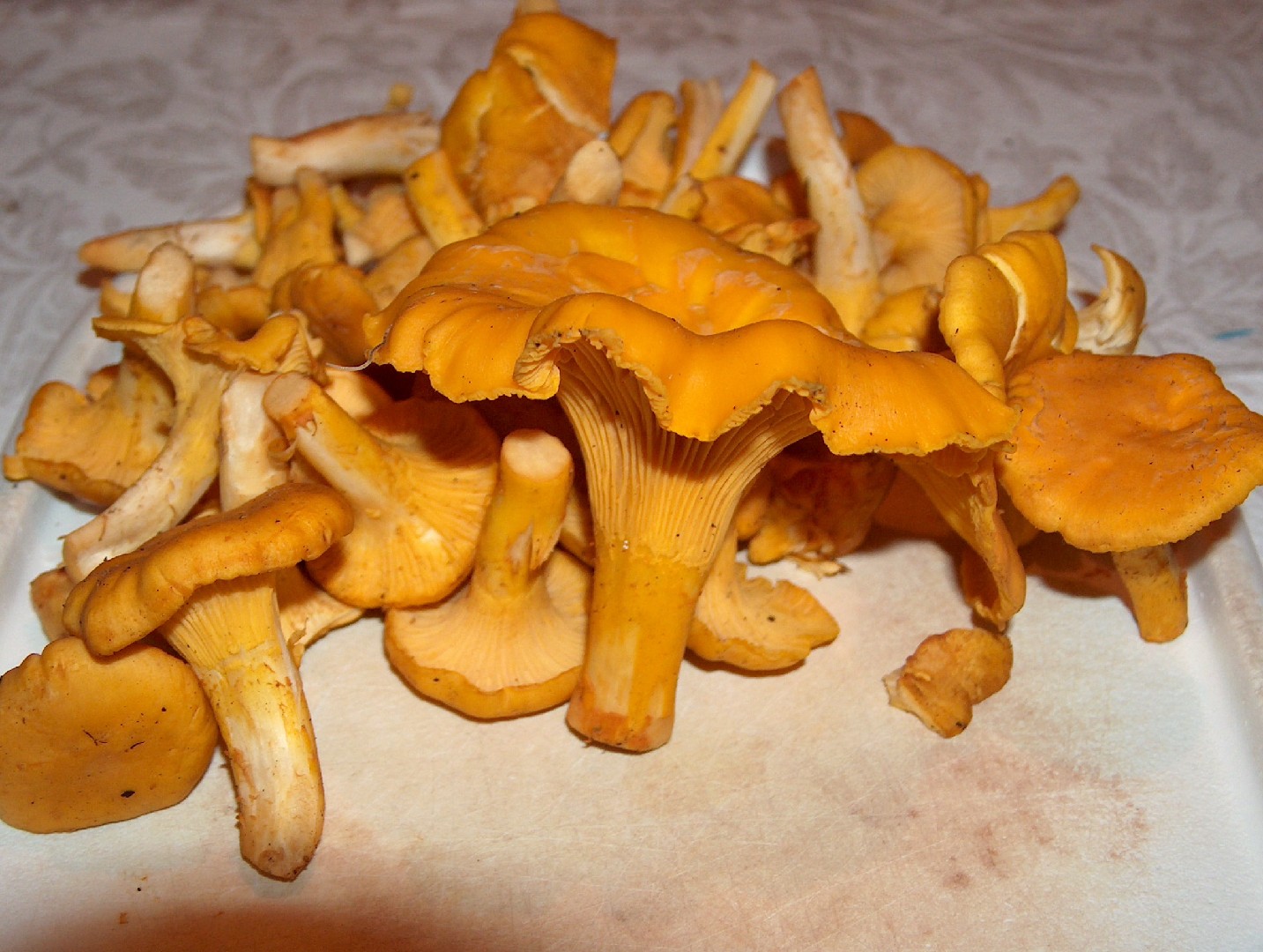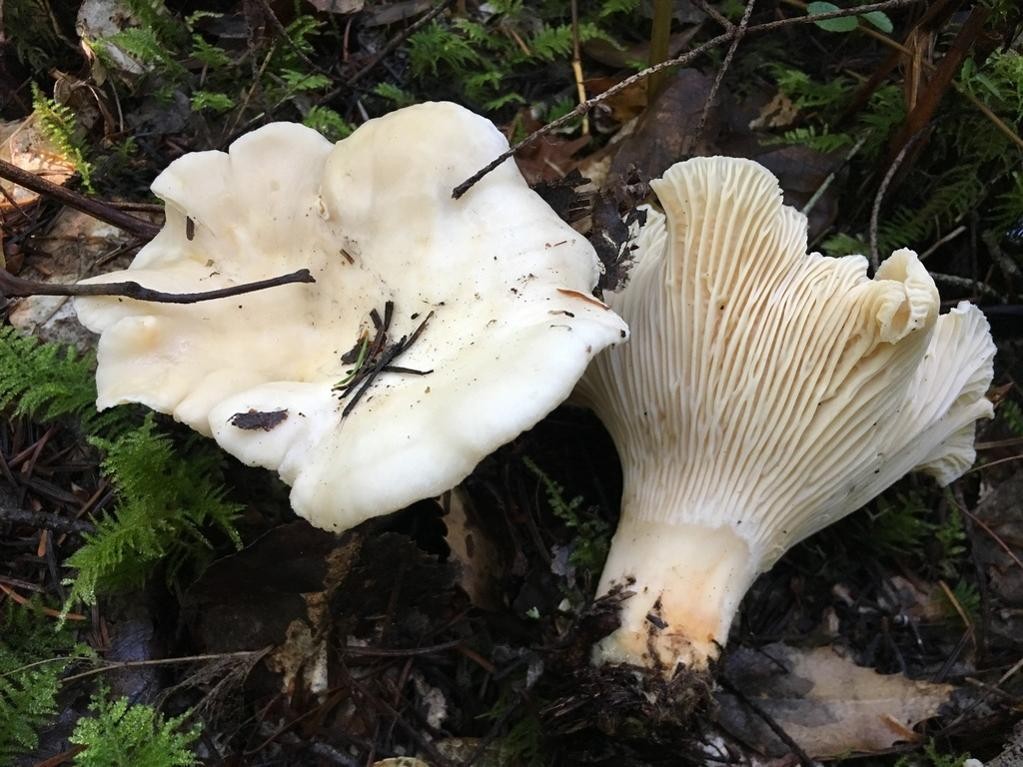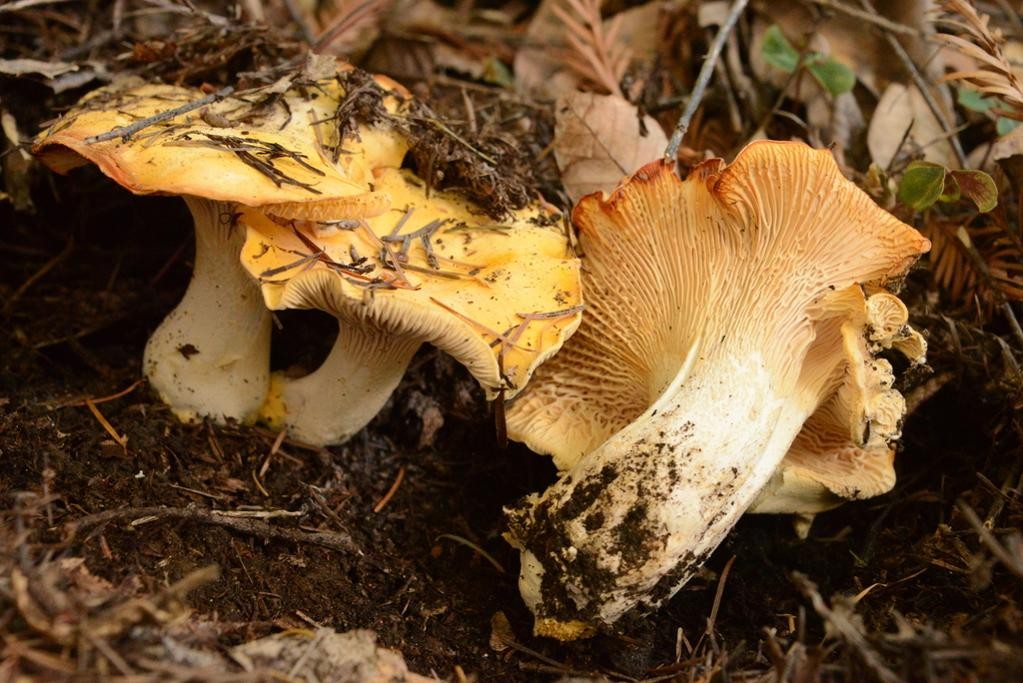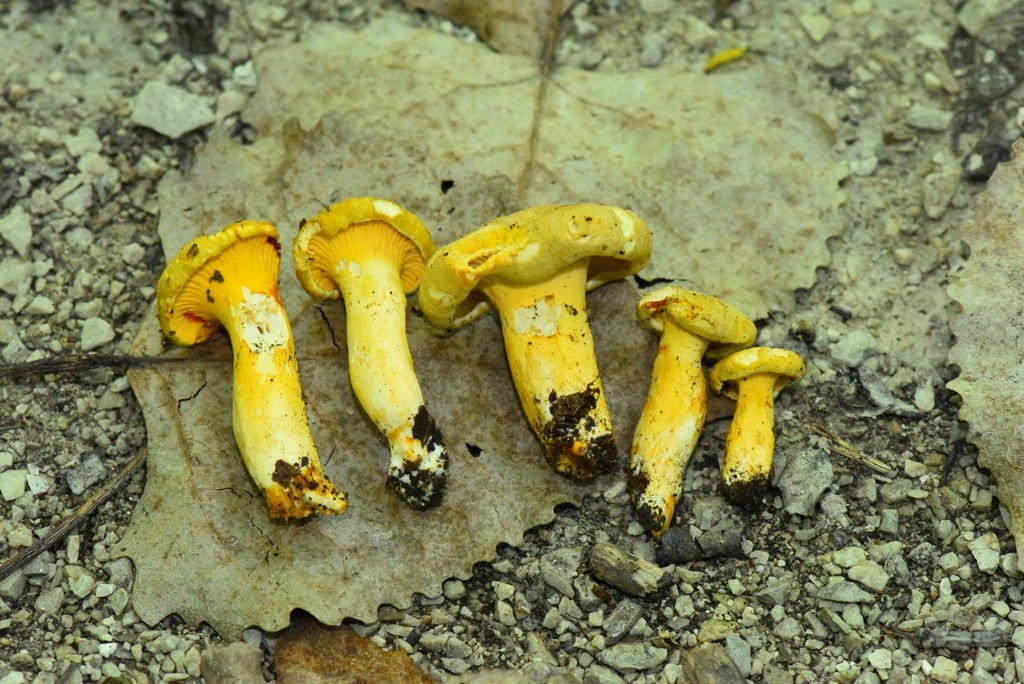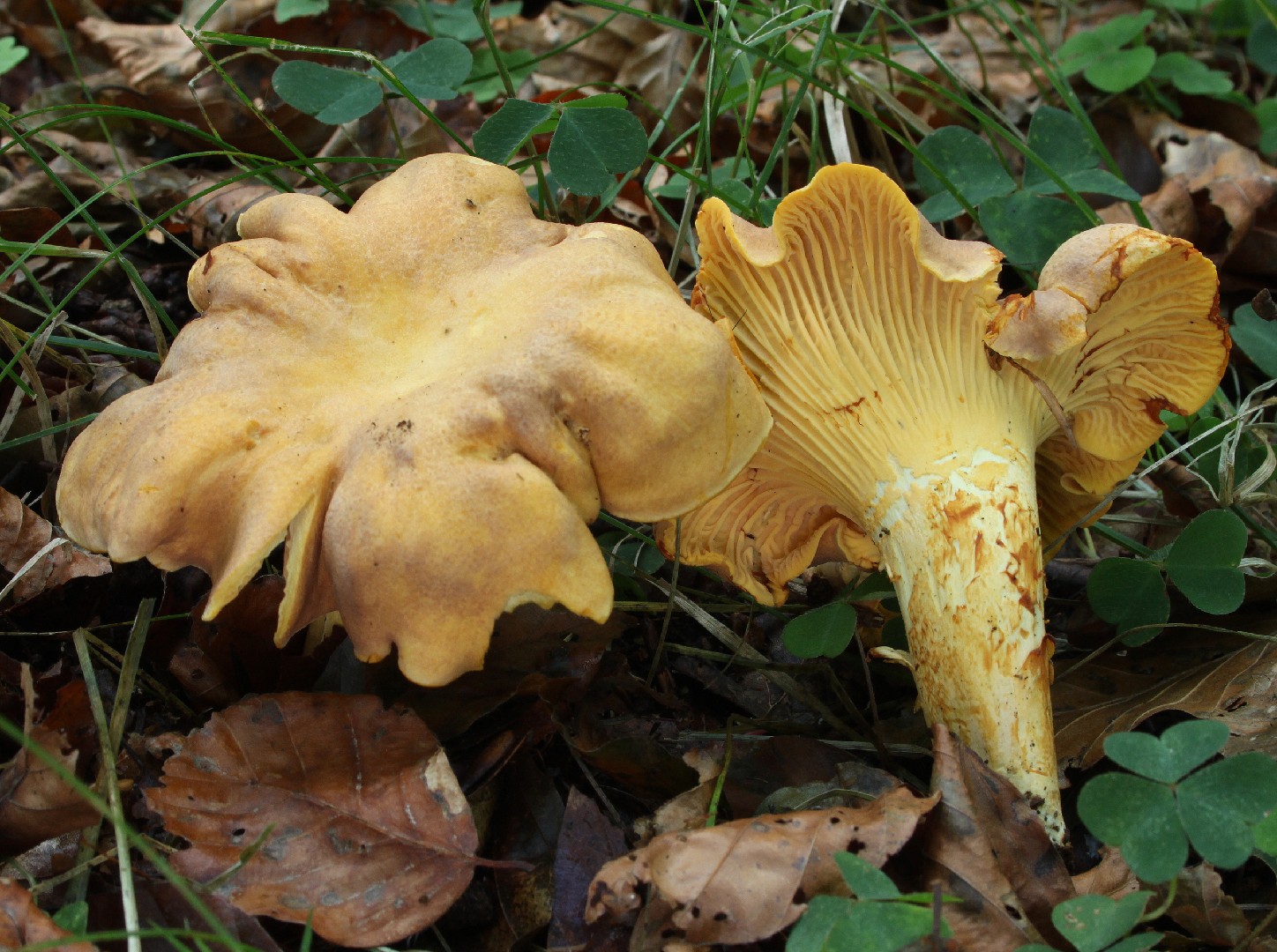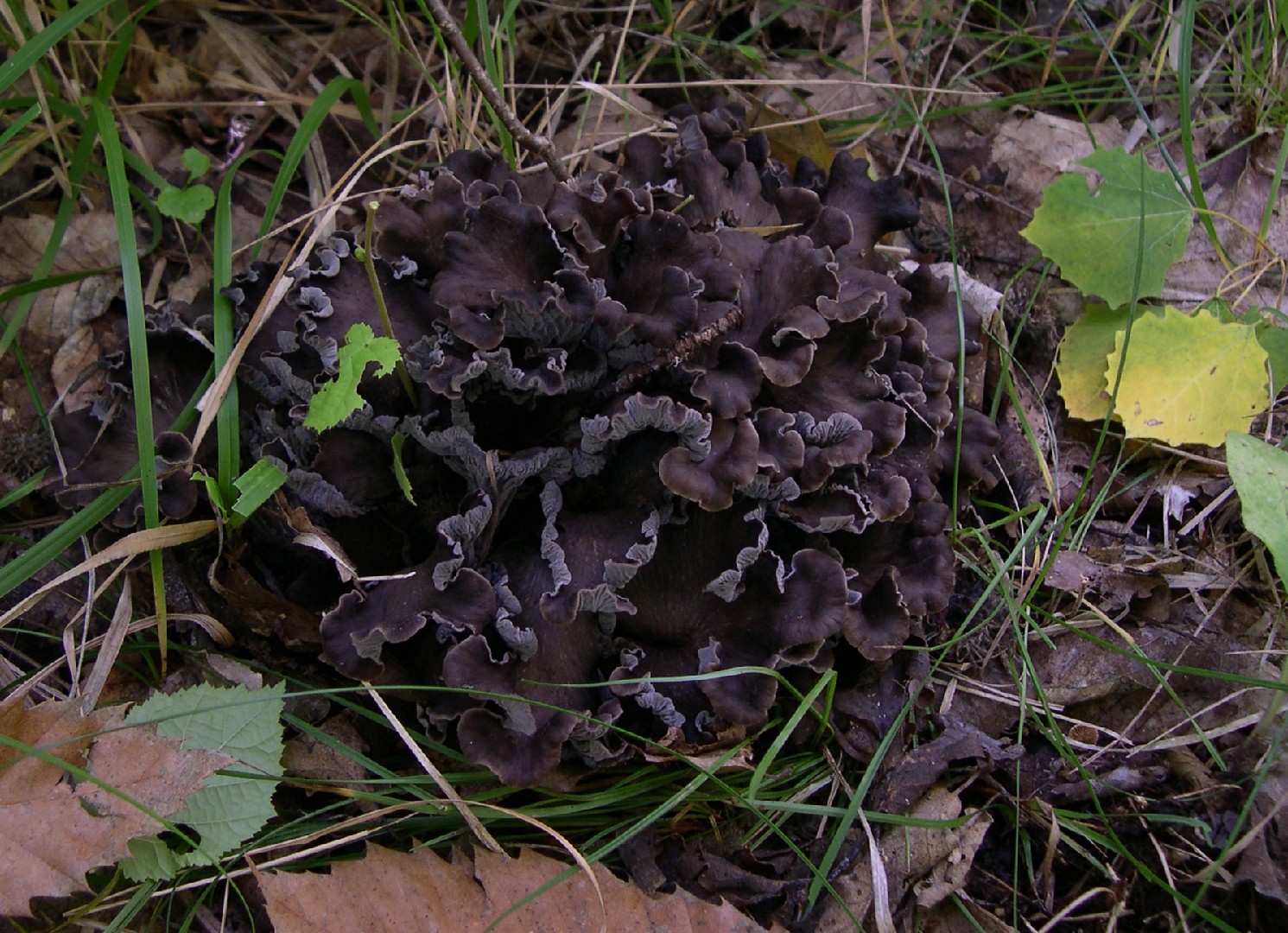Chanterelles
Scientific name: Cantharellus
Chanterelles
Scientific name: Cantharellus
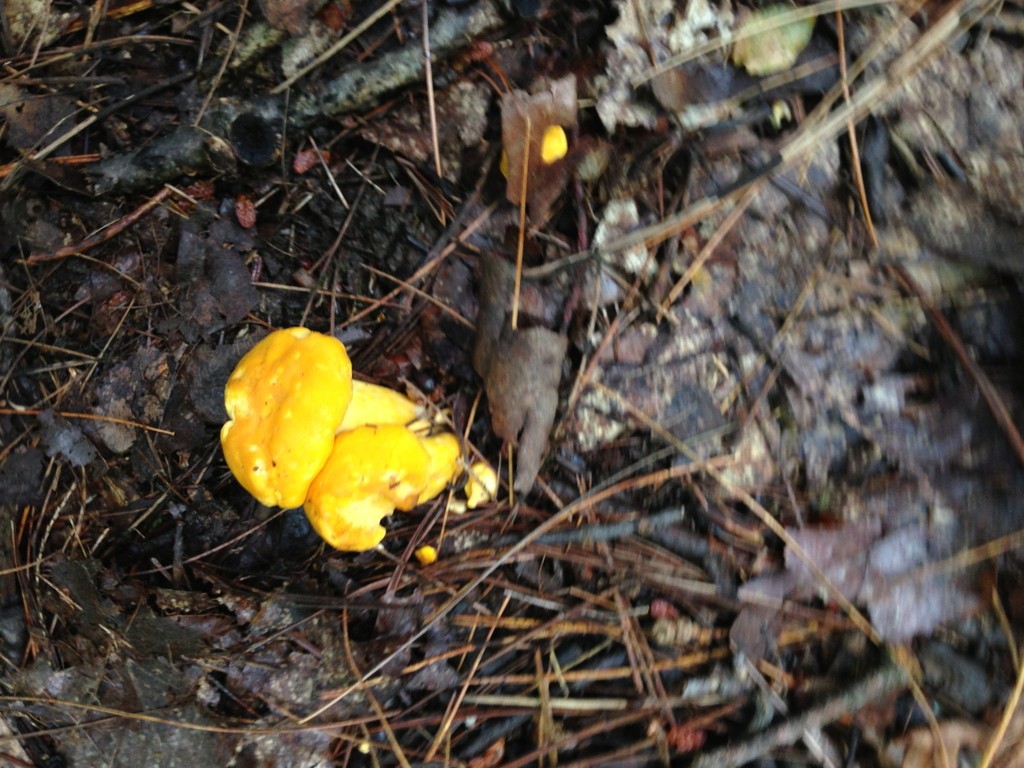 Photo By Jennifer Rycenga , used under CC-BY-4.0 /Cropped and compressed from original
Photo By Jennifer Rycenga , used under CC-BY-4.0 /Cropped and compressed from original Description
Chanterelles include several species of popular edible mushrooms. Although the genus has no known specific toxicity, some experience mild allergy-like symptoms after eating or handling them. Chanterelles are notoriously difficult to cultivate due to their symbiotic associations with other plants, and so they must be gathered from the temperate forests to which they are native. Untrained foraging is not recommended, however, as there are several species from other genuses that look extremely similar to chanterelles and are highly toxic. 
Species of Chanterelles
Scientific Classification
Phylum
Club fungi Class
Mushroom-forming fungi Order
Cantharellales Family
Chanterelle Genus
Chanterelles 

